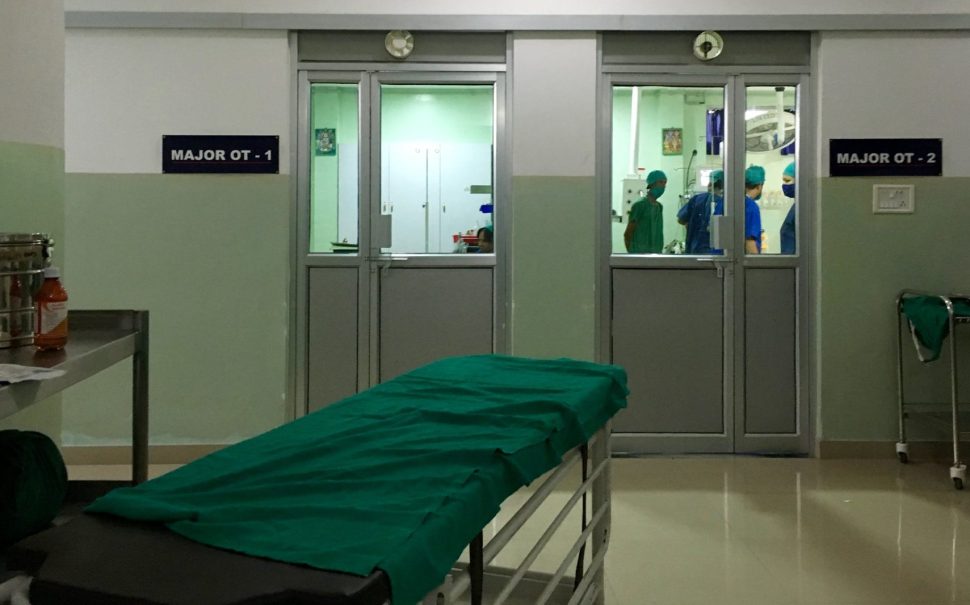A historic lack of funding, systemic sexism and the complex nature of multiple conditions that present themselves with similar symptoms perpetuate a continuing misdiagnosis gap in women’s healthcare.
Despite extra funding, educational campaigns and an increasing public consciousness, misdiagnosis leads to innumerable medical insecurities for women which will be explored through first hand interviewee perspectives and medical literature.
Misdiagnosis is most common within cases of Endometriosis, Polycystic Ovary Syndrome (PCOS), Pelvic Inflammatory Disease (PID), Urinary Tract Infections (UTIs), Pelvic Floor Dysfunction and Interstitial Cystitis (IC).
As a result of the complex nature of diagnosis, and a historic lack of funding and research in women’s healthcare, many suffering with these conditions, and similar, face long waits to diagnosis and thus treatment.
Recent research found that of a case study of 30, 17 were misdiagnosed with other illnesses, such as Irritable Bowel Syndrome (IBS) or Inflammatory Bowel Disease, Solitary Rectal Ulcer Syndrome and even metastatic tumours.
Those with endometriosis see average waiting times of between four to eleven years following the onset of symptoms to finally receiving a diagnosis.
This is despite the fact that around one in ten women suffer from the condition, according to The Lancet Medical Journal.
As detailed in The Lancet, and elsewhere, funding is a central issue to diagnosis, or the lack thereof.
Many conditions affecting women’s organs can present similarly to other conditions, both on a cellular level and in terms of symptoms.
Furthermore, because of the lack of non-invasive methods of diagnosis for conditions like endometriosis, the medication and hospitalisation that accompanies a laparoscopy diagnosis means it is not an inexpensive option for the NHS to offer.
On an individual level, long recovery times may also put women off laparoscopy procedures and socio-economic factors may prohibit women from taking the time needed away from employment or childcare responsibilities.
However, even when surgery is an option in the diagnosis process, it is not always a success. This was the case for Clare Hirst.
Clare is 22 and lives in North London where she is in her final year of study at the prestigious Musical Theatre School, The Urdang Academy.
The intensive physical exertion of performing complex ballet, tap and jazz pieces on stage coupled with a history of painful periods led Clare to seek a diagnosis.
Clare began suffering with chronic symptoms at 16. She said she: “Had horrendous pain and went back and forth between Doctors for four years before surgery at 21.”
However, Clare’s story also highlights the issues around trying to obtain a diagnosis within the NHS, as she was ultimately forced to go private.
An NHS scan at 17 found an ovarian cyst, which Clare said: “Doctors didn’t do anything about it, just saying it might go away on its own.”
This lack of reassurance and action saw Clare trialling numerous different hormonal and contraceptive medications, none of which helped with the pain she was experiencing while trying to balance A-levels.
At a second ultrasound at 19 and now living in London, doctors found that the cyst had gone but offered no further help with it being Clare “having to be the one to keep chasing the doctors.”
After years of fighting for a diagnosis Clare made the decision to go private in the summer of 2021.
She said: “I thought, I’ve been going to the doctor for four years now and they’ve not done anything so I got an appointment with a private consultant which cost £65 for a ten minute conversation.”
Clare conducted a lot of her own research, reading online reviews of multiple London based gynaecologists before settling on a surgeon with a specialism in accurate diagnosis.
In a 30 minute consultation costing £200 the surgeon boasted: “I could count on one hand the amount of times I’ve done this surgery and they haven’t had it.”
Following the operation in September 2021, Clare was not found to have Endometriosis and had been misdiagnosed.
After the surgery Clare faced disparities in what was said in person as opposed to her post-op report which she found confusing.
Ultimately, the results stated that no Endometriosis tissue was found, rather it was fibrosis, a build up of fibrous tissue and the welding of one ovary onto the pelvic floor which led to similar symptoms.
Clare said that this different diagnosis “came as a shock with no warning. I thought, have I wasted my time?”

Clare also discussed the uncomfortable nature of discussing intimate issues that face such stereotypes and misinformation.
She said: “At 17, receiving treatment from a middle aged man, I felt that he was patronising.
“There was an imbalance of power. It was intimidating. Even with female doctors, there was a vulnerability.”
Socio-economic concerns also present barriers to diagnosis not only in operations leading to time away from work, but also the cost of sanitary products and pain relief.
For many, period products are out of reach and it falls on charities like End Period Poverty, to provide the necessary care needed for families living below the poverty line.
Originating from a 1973 law which was only revoked in 2021, period products were classed as: “Luxury, non-essential items.”
They were thus taxed at five per cent, until then Chancellor, Rishi Sunak, axed the so-called Tampon Tax, cutting VAT on sanitary products to zero.
However, with the average pack of supermarket tampons costing around £4 and quickly rising with inflation, many, like author Hillary Mantel, have pointed out the sexism surrounding women’s healthcare.
Mantel was diagnosed with Endometriosis at 27, after eight years of misdiagnosis, including a psychiatrist who suggested she was suffering from ‘over-ambition’ according to Giving Up the Ghost, in 2003.
Today, awareness around misdiagnosis is more common with a quick Google search seeing one inundated with a myriad of sites claiming to offer compensation for your mis-diagnosis.
‘No win, no fee’ proliferates the headlines of these sites, encouraging those affected by incorrect prognosis’ to bring their claims to court.
But the issue of misdiagnosis in the health service runs deeper than medical negligence alone.
The systemic sexism of the past means many still face an average wait time of between four and eleven years before receiving a diagnosis, and in the case of Clare, sometimes even this is subject to change later.
Featured Image Credit – The Advocacy Project via Flickr under CC BY 2.0 license





